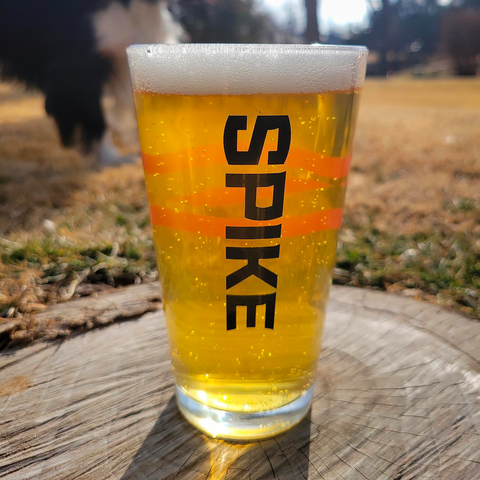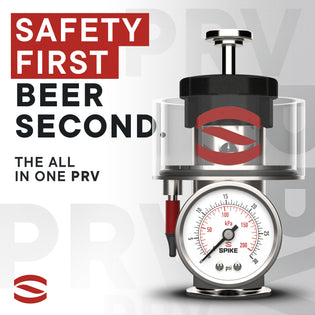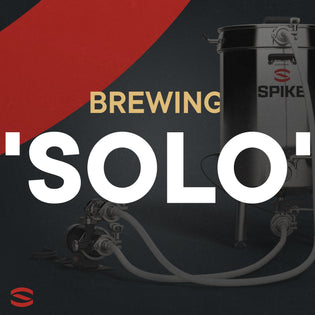By Sam Gilchrist
Fundamentally, the production of beer is simply an aqueous extraction of compounds of varying solubility from crushed grain that is sterilized, flavoured and stabilized against microorganisms through boiling in the presence of organic matter (i.e. hops), with subsequent fermentation by yeast. Of course, when you dig down it’s quite a bit more complicated than that, but the processes and ingredients are simplistic.
Yet, the over simplistic nature of the ingredients does not preclude a wide variety of recipes allowing the creation of numerous styles of beer – The brewer is the chef, and the brewery his or her kitchen.
Unfortunately, many of the delicate, volatile, aroma compounds we are in search of are lost to a myriad of brewing processes; particularly those on the hot side of brewing. These delicate flavours must be added back to preserve the flavour profile we are after and bolster the underlying hop intensity developed on the hot side.
The conversion of hop α-acids on the hot side provides a flavor base that needs additional layering of hop character to round out a balanced flavour profile; like a chef salting to-taste. Thus, the primary goal of a dry hopping regime is to extract flavor and aroma compounds from the hops, solubilize them in the beer matrix, and do this with a minimal impact on colloidal and oxidative stability.1
What is Dry Hopping?
Dry hopping is defined as a cold extraction process (4–20 °C) of non-volatile and volatile chemicals from hops into an alcoholic solution without intending to increase product bitterness. In stark contrast to hot-side hopping, dry hopping is associated with a marked decrease in isomerization of hop ɑ- (and β-) acids, and thus results in a hop addition with that aims to preserve the fresh, fruity, aroma compounds present in the plant material, while limiting the bittering effects of isomerization.
Conversely, hop additions that occur during the boiling phase of brewing, and potentially during the whirlpool phase depending on temperature, are subject to thermal isomerization to α-iso-acids resulting in the production of bittering compounds.
The history of hop usage in beer is covered quite extensively elsewhere, and I will not cover it here. However, it is interesting to note that the first reported use of dry hopping took place in the British Empire, where brewers used kettle hops and presumably dry hopping techniques to increase both the microbial stability and flavor profile of beer.
In fact, more recent investigations using modern day science have begun to unravel the reasons that dry hopping indeed increases the oxidative stability of the final brewed product. Anita Oberholster and her group at the University of California Davis have shown that after ~24 h of dry hop contact time, at 1.43 g pellets per liter of beer (~0.05oz/gallon), the beers were chemically preserved to some degree.2 However, that is typically not the reason that most brewers are focused on the art of dry hopping.

How Does Dry Hopping Affect Taste?
The main purpose of dry hopping, as mentioned earlier, is to bolster the assertive hop base flavour in post-fermented beer through the addition of more delicate hop aroma compounds.
We can turn our attention to some scientific work to help us better understand how dry hopping influences the taste of beer. In an article by Thomas Shellhammer’s group out of OSU, researchers used a panel of 13 trained panelists to score the differences in the samples of dry hopped compared to non-dry hopped beer using a sensory analysis score of the orthonasal aroma, broadly defined as the ability to perceive flavor dimensions of foods and drinks. The descriptive sensory analysis score for 24h dry hopped beer samples demonstrate significant positive correlation between dry-hopping rate and the sensory attributes.
These sensory scores are supported through the evaluation of hop volatile analysis in the headspace of beer samples. Increasing dry hop doses broadly correlated positively with levels of many volatiles such as β-caryophyllene (spicy, woody), α-humulene (spicy), terpinen-4-ol (menthol), α-terpineol (citrus), linalool (floral, fruity, citrus), nerol (rose-like), geraniol (floral, rose-like), and geranial (green/grassy, floral).
So as one can see, there are certain volatile compounds that would be undesirable at elevated concentrations if the goal was to create a floral and citrusy IPA. Thus, it is not surprising that more is not always better. These authors show that overall hop aroma and intensity and citrus characteristics favour a nonlinear relationship with diminishing returns beyond 800g/hL.
Beyond this concentration, herbal/tea notes dominated the sensory analysis. It was broadly observed that the extraction rates of the terpene alcohols, like linalool, which impart citrus and floral notes, decreased with increasing dry hop rates. Therefore, this study suggests using a static dry-hopping rate between 400 and 800 g/hL (0.5-1oz/Gallon) to highlight fruity hop character.3
So time on hops matters, but what about timing of hop additions? Researchers at Sapporo brewery in Japan published an interesting article in 2016 showing how the timing of dry hop charge, defined as late (pre-fermentation after autoclaving), dry 1 (at day 3 of fermentation) and dry 2 (at day 6 of fermentation), changes the hop-derived flavour compounds in late-hopped and dry-hopped beers. In this investigation concentrations of key monoterpene alcohols (β-citronellol, nerol, geraniol and their derivatives), β-ionone and several esters (isobutyl isobutyrate, isoamyl isobutyrate, 2-methylbutyl isobutyrate and ethyl heptanoate) were generally higher in dry hopped beer when the hops were added at day 6 of fermentation compared to day 1 of fermentation.
Thus, it is suggested that the addition of hops later in fermentation is of critical importance in increasing the concentration of hop-derived flavour compounds. However, it is worth noting that linalool, a key monoterpene alcohol imparting citrus and fruity notes, demonstrated markedly increased concentrations in late-hopped beer (i.e. prior to inoculation with yeast) compared to either of the dry hopped samples.4
This finding is somewhat surprising yet does support the rationale for “dip hopping” where hops are steeped with hot water in the fermentation kettle prior to the addition of post-boil wort with subsequent inoculation with yeast. Dip hopping warrants a separate blog post and won’t be discussed further, but steeping hops appears to have a tremendous influence on hop character of the final product.
The Risks of Dry Hopping
Over-attenuation (aka “hop creep”)
If you’ve ever added hops when you were sure fermentation was complete, and subsequently watched as your final gravity reading continued to drop, you are certainly not alone. This phenomenon, known as hop creep, is effectively the liberation of fermentable sugars due to enzymatic processes within the hop plant material.
The diastatic activity of hops was likely first outlined in 1941 in a publication by Janicki and colleagues from the University of Manchester. These sets of experiments showed that dry hop additions can produce an appreciable quantity of fermentable sugars in a dextrose-rich beer, and promote what the authors refer to as "after fermentation”.5
The cleavage of non-fermentable sugars to fermentable sugars reached near completion within 6h in these experiments suggesting that even the shortest times needed to achieve maximal extraction of hop aroma compounds,would not be short enough to mitigate the effects of saccharification.
What is interesting, is that these experiments also show that the diastatic activity of hop seeds is considerably more potent than whole hops, and thus hop varieties that do not contain seeds may lessen, but not prevent, the saccharifying effects of dry hopping.
Prevention of hop creep can be challenging. Removing yeast from fermentation vessels can be challenging for most homebrewers who do not have the luxury of bottom-draining fermenters. One strategy that has been anecdotally shown to be effective is “soft crashing” the beer below the ideal temperature threshold of the yeast. While we know biological processes simply do not stop when cold (or colder than “ideal”), this strategy is aimed at simply decreasing the rate at which the yeast will restart fermentation. Personally, I continue to use this technique with good success.
Increased Bitterness
While dry hopping is generally associated with the extraction of the more delicate volatiles, research has shown that there are increased extraction rates of the non-volatiles that can contribute to perceived bitterness in the final beer in the absence of isomerization. Again, we turn to Thomas Shellhammer’s work, who has shown a positive correlation between the dry hopping rate and perceived bitterness in trained panelists.
As dry hopping rates increased, so did the extracted concentration of humulinones, which are naturally occurring compounds formed from the oxidation of α-acids in hop leaves. The presence of humulinones can be found in nearly 8-times the concentration in dry hopped Belgian trappiest beers compared to non-dry hopped counterparts and has been attributed to be responsible for nearly 30% of the bitterness.6
Thus, it is plausible, and even likely, that heavily dry hopped beer will present more bitter than the brewer may have expected.

Oxidation
It has been said, and shown anecdotally, that oxygen is the moral enemy of highly dry hopped beer, in particular hazy IPA’s. However, I’ve been unable to find much research to support the mechanisms at play in the context of dry hopping alone. It is proposed that the production of reactive oxygen species (ROS) in wort are the driving mechanism in the degradation of beer matrix compounds resulting in off-flavours and discolouration (a Maillard-type reaction resulting in browning seen in light beers).
While there is clearly complex interplay between various degradation pathways, in an investigation from researchers at Technische Universitat Berlin, it was demonstrated for the first time that the de novo formation of Strecker aldehydes, resulting from free radical attack on amino acids, was largely dependent on the concentration of dissolved oxygen and a key contributor to the staling reactions in stored beer.7
While this investigation was not focused on dry hopping, the principles would similarly apply. Methodology to reduce the exposure of beer to oxygen such as hop dosing under CO2, using a CO2-saturated hop doser, or dosing hops during active fermentation to consume excess oxygen, should be considered.
pH
The pH of finished beer can have a drastic effect on a number of characteristics, including stability, flavour profile, and infection risk, particularly in pH ranges beyond 4.2-4.5. In a Master’s thesis by Matthew Schmick, at the University of Wisconsin-Stout, he describes a series of experiments illustrating the influence of dry hopping on final beer pH.
These experiments show a mean pH change between 0.040-0.056, and 0.233-0.332 at a rate equivalent to 0.5 lb./bbl. And 3.0 lbs./bbl., respectively, and thus suggest that beer with higher dry hop doses are at increased risk of pH drift.8
These data have been broadly shown in literature, including the work of Thomas Shellhammer and colleagues, who demonstrated a linear increase in pH with dry hop dosing with ~0.14 pH unit increase for every 0.5oz of dry hops per gallon of beer.3 Furthermore, the pH drift has been demonstrated to be independent of the hop variety and beer style.
Contact Time, Temperature and Agitation
There are many more variables to consider when adding dry hops to your post-fermentation vessel. As the transfer of soluble components out of the organic hop material follow dissolution kinetics (that is, follow a concentration gradient dependent on the aqueous solubility of each component), we must consider various factors that can influence those processes. In particular, variables that are within the control of the brewer are hop contact time, dry hop temperature, and agitation.
One would assume, more contact time would equate with more mass transfer of delicate hop compounds into the beer. As it turns out, this is not necessarily true, and may in fact be the opposite.
Peter Wolfe, a graduate student out of OSU, demonstrated in his 2012 Master’s thesis that day 7 concentrations for linalool and myrcene were not higher than those achieved with 24h of dry hopping. In fact, peak extraction of hop aroma compounds were reached in ~6h, suggesting that 24h might be sufficient to achieve complete extraction of α-acids and polyphenols.1 Further, some components of the hop extraction had declined by day 7 suggesting a partitioning of these extracts back into the organic hop material.
Twenty-four hours of contact time between fermented beer and hop material appears to result in near complete saturation of beer with hop-derived flavour compounds. But how might the temperature influence these processes? In 2013 a supplement by Mitter & Cocuzza showed that the increased polarity of the terpene alcohol linalool was not appreciably different, and nearly complete, by 24h at both 0°C and 20°C. Myrcene, on the other hand, showed marked differences with solubility limits reached by 48h at 20°C, doubling the limit reached at 4°C over the 2-week observation period.9
Thus it stands to reason that cold dry hopping techniques would favour beer styles characterized by the floral, citrusy notes of linalool, like NEIPA’s. Conversely, a warmer dry hop technique may favour beer styles characterized by more resin, piney notes, like West Coast IPA’s.
Sedimentation of organic matter can certainly influence the dissolution of hop aroma compounds by limiting exposure of the plant material to beer. In the short-term extraction data shown by Wolfe, these experiments were performed under conditions with constant agitation and at 20°C, and thus the influence of not only temperature, but also agitation, on the extraction solubilities of both linalool and myrcene would be of interest in helping understand the behaviour of terpene alcohols and α-acids during the dry hop period.
In an article by Scott Janish, he describes a study where recirculation of beer using a pump found a 58% increase of linalool after just 2 h of dry hopping compared with a control beer that was not recirculated.10 Scott also goes on to describe the “burping” techniques used at various professional breweries to disturb the hop material and ensure contact time between beer and the organic hops to facilitate mass transfer of hop-derived compounds.
Dry Hop Like the Pros
For the most part, I believe that we do. Most recipes simply adopt the industry-standard practice of between 4-12 days of dry hop exposure. However, I hope that the data presented above suggest that these approaches simply may not be optimized for hop aroma compound extraction at the homebrew scale.
I’ve added a small decision tree that I’ve created based on the data presented in this blog post. It is nowhere near comprehensive, but does provide guidance on some of the thought processes I go through when considering my dry hop schedules.

Final Thoughts
Variable control, and understanding the aforementioned concepts, can only help your brewing process. But this does not mean you cannot make wonderful beer without following them. Brewing can be as easy or complex as you want it to be, and the process should be enjoyed in either camp.
As a scientist, I encourage experimentation with variables under proper control, and I recognize that’s not for everyone. When it comes down to it, the homebrewing experience is all that matters. It is uniquely personal in its methodology, stylings, and motivation. So, no matter your reasons for home brewing – and dry hopping – you do you!

Scientist, cyclist and avid, albeit somewhat novice homebrewer, Sam Gilchrist began his homebrewing journey during the COVID lockdown—fulfilling a desire that had been brewing (pun intended) in his mind for many years. A proud Spike Solo System owner, his understanding of science and methodological approach has significantly impacted how he brews, while rediscovering his love of biology, lab science and his oddly compulsive desire to control variables.
References:
- Wolfe, Peter Harold. (2012) A Study of Factors Affecting the Extraction of Flavor When Dry Hopping Beer.: Oregon State University.
- Titus BM, Lerno LA, Beaver JW, Byrnes NK, Heymann H, Oberholster A. (2021) Impact of Dry Hopping on Beer Flavor Stability. Foods; 10(6):1264.
- Lafontaine, S. R., and Shellhammer, T. H. (2018) Impact of static dry-hopping rate on the sensory and analytical profiles of beer. J. Inst. Brew., 124: 434– 442
- Takoi, Kiyoshi. (2016). Varietal Difference of Hop-Derived Flavour Compounds in Dry-Hopped Beers. Brauwelt International. 34. 244-249.
- Janicki, J., Kotasthane, W.V., Parker, A. and Walker, T.K. (1941), THE DIASTATIC ACTIVITY OF HOPS, TOGETHER WITH A NOTE ON MALTASE IN HOPS. Journal of the Institute of Brewing, 47: 24-36.
- Carlos Silva Ferreira, Eloi Thibault de Chanvalon, Etienne Bodart & Sonia Collin (2018) Why Humulinones are Key Bitter Constituents Only After Dry Hopping: Comparison With Other Belgian Styles, Journal of the American Society of Brewing Chemists, 76:4, 236-246
- Philip C. Wietstock, Thomas Kunz, and Frank-Jürgen Methner (2016) Relevance of Oxygen for the Formation of Strecker Aldehydes during Beer Production and Storage. Journal of Agricultural and Food Chemistry 64 (42), 8035-8044
- Schmick, M. J. (2014). Dry hopping and its effect on Beer pH. University of Wisconsin-Stout, Graduate School
- Cocuzza, Sandro and W. Mitter. (213) DRY HOPPING – A STUDY OF VARIOUS PARAMETERS Consequences of the Applied Dosing Method.





